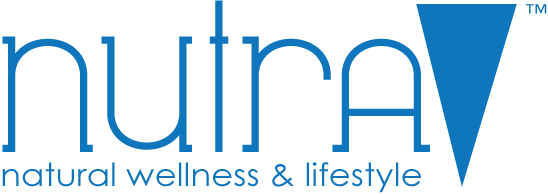How to Defy Skin Aging
If you are on an anti-aging journey and are interested in looking and feeling your best, you know healthy food and lifestyle go a long way to improving and maintaining a youthful appearance. But living in extremes isn't healthy either. If you have a history of high-carb diet, drinking, and smoking and try to balance it with excessive amounts of exercise and time outdoors, you aren't benefiting your skin. Even doing triathlons won't help.
There's good news. There are ways to restore that youthful glow. In this article, we'll review some ultra-smart hacks to restore your youthful appearance and prevent aging, wrinkly, and dry skin that comes from unhealthy living.
Causes of Skin Damage
Skin aging occurs both inside and outside your body, and if you live an active lifestyle, you are most likely experiencing both because of swelling and free radicals.
Inner aging, called intrinsic aging, describes changes in the skin that take place due most often to genetics. Outer aging, called extrinsic aging, comes from a long list of factors such as:
- Excessive sunlight exposure
- Overconsumption of sugar or processed foods
- Stress and anxiety
- Not enough rest
- Chemical or toxic substance direct exposure
- Lack of sufficient protein
- Fat and also veggie consumption
- Alcohol abuse
- Cigarette smoking
- Dehydration
- Too much exercise
Extrinsic aging also affects intrinsic aging, making it doubly important to address.
The low-grade inflammation from both of these aging elements creates free radicals, which draw electrons from molecules and change the chemical structures and functions of cells. Even if you're on an anti-inflammatory diet regimen and limiting your extreme workout as well as enabling ample rest and recuperation, you still need to increase protection from extrinsic causes.
Sunlight Damage
The sunlight gives off UVA and UVB radiation that reaches the planet's surface. UVB radiation is soaked up in the outer skin by particles that can be converted into vitamin D in your body. Adequate amounts of vitamin D is necessary for bone health, mood, immune performance, and even fertility. Vitamin D deficiency has links to cancer and other chronic conditions, including musculoskeletal disorders, high blood pressure, diabetes, autoimmune conditions, and even cardiovascular disease.
UVB radiation creates sunburns, while UVA radiation passes much deeper into the skin to cause DNA damage. If you have excessive UV radiation exposure, cells will be damaged to the point of dying.
Constant sun exposure triggers dark spots. When melanocyte cells between the outer and inner skin are exposed to UV rays, they produce a dark substance called melanin that works as all-natural sunlight security that soaks up UV rays.
UV radiation additionally harms collagen and elastin, speeding up skin aging. Collagen is the main protein that holds skin and connective tissue. Elastin is a protein located in any type of flexible tissue and helps skin return to its original structure after stretching.
UV direct exposure harms the collagen, making it firmer, which weakens the skin's structure. Excessive sunlight also accelerates loss of collagen by up to 20%. Excessive UV direct exposure influences elastin too, triggering an irregular accumulation of elastin and the enzyme metalloproteinase. Usually, this enzyme helps sun-damaged skin recoup by creating and reforming collagen; however, excessive quantities minimize their performance and leads to the collagen breaking down, causing wrinkles.
Unsafe Chemicals
Here are four unsafe chemicals you likely enter into contact with every day:
- UV Blockers
In your attempt to shield yourself from sunlight damage, you need to be mindful about which sunblock you buy. Numerous chemical UV blockers (octocrylene, octyl methoxycinnamate, or benzophenone-3) become unstable with UV radiation and also create higher production of reactive oxygen than what is naturally generated. Oxybenzone, or benzophenone-3, also disrupts the endocrine and leads to shorter adolescence, low sperm, and infertility problems in both sexes. PBSA results in DNA damage in human skin cells when in contact with UV rays.
- Parabens
Parabens are preservatives in makeup, face washes, creams, deodorant, and shampoo that help against mold, yeast, and bacteria. Parabens disrupt the endocrine that stimulates estrogen and have actually been discovered in breast cancer tissue. They may also affect male reproduction
- Sodium Lauryl Sulfate (SLS) and Sodium Laureth Sulfate (SLES)
SLS is used as a detergent as well as a surfactant. It separates particles to produce a lather and makes it more effective on your body or hair. SLS is a recognized skin irritant that remains in skin tissue numerous days after application. Although a direct cancer link hasn't been shown, it is made using well-known health hazards and integrates with other chemicals like triethanolamine to create nitrosamine carcinogens. These detergents likewise rids the skin of natural oils your body needs to aid in guarding skin and maintaining needed moisture.
- Scents
Scents are improperly regulated, and many compounds used to produce a fragrance aren't indicated on the product. Numerous fragrances examined are understood to cause allergic contact dermatitis. Phthalates are often included in scents and not noted on the products, even though they are well known endocrine disruptors.
Nutrition and How It Relates to Skin Health
Glucose is a primary fuel source for skin cells and is essential for the outermost skin layer. It gives carbs foundations for healthy proteins and lipids that make up outer skin. Problems in the guideline of sugar metabolic rate and also insulin signaling (as is seen in diabetic issues) significantly influence skin framework. They can trigger blisters, sores and impair your body's ability to recover from wounds. To put it simply, too much glucose and too little glucose are both problems. Here is how you can regulate it.
Amino acids from healthy proteins and food supplements are crucial for the manufacturing of all skin structures, even the outer layer. Amino acids, on their own or mixed together, aid in collagen production. Supplements may enhance the production of collagen you naturally lose as you age, helping you combat wrinkling and drooping skin.
Lipids (fatty acids) are needed to produce the outer layer of your skin, as well as for skin cell differentiation, skin cell membrane layers, and for absorbing lipid-soluble nutrients. Essential fatty acid (linoleic acid as well as α-linolenic acid) deficiency leads to flaky skin and skin water loss. Therefore, omega-3 and omega-6 polyunsaturated fatty acids are important to the regular function and look of skin, to maintain your skin hydration, and to have a plumper, youthful look. Maintain doses of fish oil every other day if you don't regularly eat fish.
Your food intake and its influence on skin disease has been researched, and results vary. In one example, Japanese females who intake more total fat had more skin elasticity, while a higher consumption of saturated fat and also eco-friendly, green and yellow veggies reduced the signs of crow's feet around the eyes. Research on skin wrinkling of older adults living in sun-exposed locations shows a high consumption of vegetables, beans as well as olive oil to be safe for the body, whereas a high consumption of meat, dairy products and butter have adverse effects.
Research on middle-aged women in the US showed higher linoleic acid and vitamin C and a reduction in fats and carbs led to better skin. And those battling acne who have low glycemic diet regimens seem to have less acne along with reduced inflammation and smaller sweat glands.
The majority of the info you'll find on nourishment and skin health and wellness concentrate on deficiencies due to a need for healthy proteins, fats, vitamins, and minerals. This is particularly important to remember when undergoing chronic dieting.
Ideal Nutrients for Glowing Skin
Many nutrients play important roles in maintaining healthy skin. If you have intestine or autoimmune problems, getting a handle on them first is essential for boosting skin health.
Vitamin A influences almost every facet of skin function. It promotes cell cycles, thickens and promotes the dermis, hinders sebaceous gland activity, and also suppresses androgen formation, making it an asset in fighting acne and aging. Dry, rough skin is a typical indicator of a lack of vitamin A, and it is often used topically in treating skin. Good sources are cod liver oil, liver and pastured cream, butter, and chicken eggs.
Omega-3 fatty acids are powerful anti-inflammatories, and provide optimum nutritional consumption while stabilizing the proportion of omega-3 to omega-6 fats in your diet, which is crucial for skin wellness. High omega-3 intake helps reduce the negative effects of the sun, and anti-inflammatory characteristics reduce inflammation with acne, psoriasis and even rosacea. Scientific results show it improves skin and reduces scaling. Coldwater fish like salmon, sardines, mackerel, and tuna are your best sources for omega-3, or you can take fish supplements.
Zinc plays an important function in protein synthesis, cellular division, wound recovery, and immune performance. Studies reveal that zinc minimizes acne as effectively as antibiotics and aids with injury healing, and reduces UV damage while also being anti-inflammatory. Zinc is found in organ meat, red meat, shellfish, and pumpkin seeds, or you can purchase supplements.
Vitamin C is a vital antioxidant that prevents UV-induced photodamage. Consuming Vit C leads to better-looking skin while fighting wrinkles and reducing dry skin. It encourages collagen production and can boost collagen protein synthesis to encourage skin repair. Vitamin C supplements, either topical or oral, fight oxidative damage in proteins that comes from aging and UV exposure. Good sources of Vitamin C are bell peppers, citrus, dark leafy greens, and broccoli.
Selenium is a vital trace element that is commonly low in the body. It is essential to the antioxidant function of glutathione that guards your body from free radicals and cell damage. Some results show it can even reduce the risk of skin cancer. Selenium aids in the absorption of Vitamin E and increases the antioxidant function of nutrients while protecting cell membranes. It can be found in foods like Brazil nuts, seafood, organ meat, and poultry.
Astaxanthin works as a natural sunscreen in marine plants and is a red pigment carotenoid that can be consumed with wild salmon or krill. It can also be supplemented. It is a potent antioxidant that is even stronger than Vitamin E, CoQ10, Vitamin C, and green tea. This safeguards your cells from damaging oxidation that brings about aging. Research shows that astaxanthin prevents UVA-induced DNA damage in skin cells and protects against skin sagging from UVA radiation exposure. 6 mg per day orally with 2 ml topical application improves skin wrinkles, age spots, elasticity, texture, and skin moisture.
Luckily, fish oil supplements with a plant-rich diet solve most of the above issues.
Biohacks For Extra Lovely Skin.
Along with a diet plan, there are many other methods for enhancing your skin's appearance without relying on chemicals, botox, or surgical procedures.
Facial Massage Therapy
Face massages help minimize anxiousness and negative state of mind and release muscle tension that can create forehead wrinkles. It also aids with sinus drainage and lymphatic vessel stimulation.
Put a dime-sized portion of facial oil on the palm of your hands to evenly distribute it across your fingers and palms. Add face serum to increase its absorption and enhance the advantages. Begin at your temple, pressing your fingers in between your brows and moving up and away from your forehead, repeating this process with a blend of gentle and firm pressure. Then move to your cheeks, moving fingers from the center of your face to your ears. Start your outside motions under your eyes. Repeat it multiple times before moving down your cheeks to your jawline. End with your neck, massaging with vertical strokes from your collarbones to your jawline.
Face Exercises
There are around fifty muscles in your face, and exercising them often will offer you the exact same firming and toning benefits as muscular body tissues, while tightening sagging skin and decreasing the appearance of wrinkles.
The following exercises strengthen the muscles around your forehead and eyes to smooth out creases and brighten your look.
- Place your index fingers about a centimeter above the eyebrows over the center of your eyes. Apply gentle pressure. Shut your eyes while trying to raise your eyebrows up against your fingers. Repeat the process ten times.
- Make "peace signs" with your fingers and place your index finger at the outer edge of your eyebrows and the middle finger at the start of the eyebrows. Move your fingers backward and forwards while flexing the muscle areas simultaneously. Do three collections of 10.
- Close your eyes and raise your eyebrows with your index fingers. Keep your eyes shut while lifting and stretching your eyelids, and then hold them for ten seconds. Repeat ten times.
Mouth Exercises
These exercises reinforce the muscles around the jaw and mouth and offer you better face control.
- Smile big while pushing your fingers against your cheeks, holding them in position. Shut your lips halfway and hold for 10 secs. Then close your lips totally for ten secs, utilizing your fingers to resist each activity.
- Hold your mouth, teeth, and lips shut, and open your teeth as high and low as you can while ensuring your lips are shut. Slowly move your lower jaw forward and hold for 5 secs, and then return the jaw to the original position. Repeat five times.
Brush Dry Skin
Dry skin cleaning normally scrubs the skin to get rid of dead skin cells, in addition to clearing out oil, dirt, and deposits from pores that contribute to dull, dry, congested skin. The gentle pressure and movement of the bristles may also boost lymph circulation to delicately detoxify the body. Dry skin cleaning helps reduce cellulite by boosting blood circulation to the skin.
Start at your feet, brushing upwards with long, smooth strokes, always moving towards the center of your body. Do the same process with your arms, belly, and back.
Infrared Light
Red and near-infrared light therapy stimulates healthy growth of skin cells, protects you from skin damage, and assists with recovery from acne. It also boosts collagen, smooths creases, enhances tone, reduces scars and stretch marks, and helps against psoriasis and herpes skin conditions.
GHK-Cu Peptide
GHK-Cu is a naturally occurring tri-peptide that decreases significantly with age. It has several organic functions like collagen synthesis, encouraging the movement of immune cells to wounds. It also boosts antioxidant and anti-inflammatory qualities and blood vessel growth. In cosmetic items, it improves skin elasticity and firmness, reduces creases, decreases skin inflammation, and lowers photodamage as well as hyperpigmentation.
Cryotherapy
Theoretically, cryotherapy tightens blood vessels and pushes out excess fluid that causes pain and swelling. After the session, your body rearranges blood, oxygen, and nutrients that is believed to speed up cellular regrowth and healing. This may reduce swelling, clear up skin problems, and increase collagen production to reduce the appearance of wrinkles and cellulite. To start the process, take a chilly shower.
Although the above hacks will improve your skin, a daily skin treatment regimen is the basis for your skin's wellness and keeping it clean, nourished, and hydrated. It works for both women and men. Here's how to do it.
The Daily Skin Treatment Routine
Along with all of the ways in which you can sustain and even enhance skin wellness, it's vitally important to keep an everyday skincare regimen that uses high-quality ingredients found in nature.
Cleanse
For the ladies: cleaning any makeup off prior to a workout prevents pore-clogging materials from entering your skin, leading to irritation and acne outbreaks as you sweat. Cleansing also reduces bacteria and toxins on your skin, preventing irritability and outbreaks.
For the men: Cleansing is something you can do after shaving or a shower. Obviously, it is essential to try to find products without unsafe chemicals, such as parabens, sodium lauryl sulfate, or phthalates and unnatural scents.
Nourish
Due to the fact that your skin is out in the open, the right nutrients and antioxidants combat aging. There are several potent organic extracts and products that will do this. Look for blends that work with your individual skin treatment demands.
Moisturize
After cleansing, you'll want to stabilize the skin and restore oils and moisturizing elements that were washed away. Antioxidant-rich seed oils calm and liquify the skin without obstructing pores that lead to acne.
Eat Healthy
What you consume can reflect on your skin. Eating an unhealthy diet filled with sugar and junk food can cause skin issues like acne to occur. Make sure to eat your fruits and veggies, and to get an extra boost of nutrients, take supplements. NutraV supplements are made with clean ingredients to make sure you don’t get any side effects. Check out NutraV supplements here.





